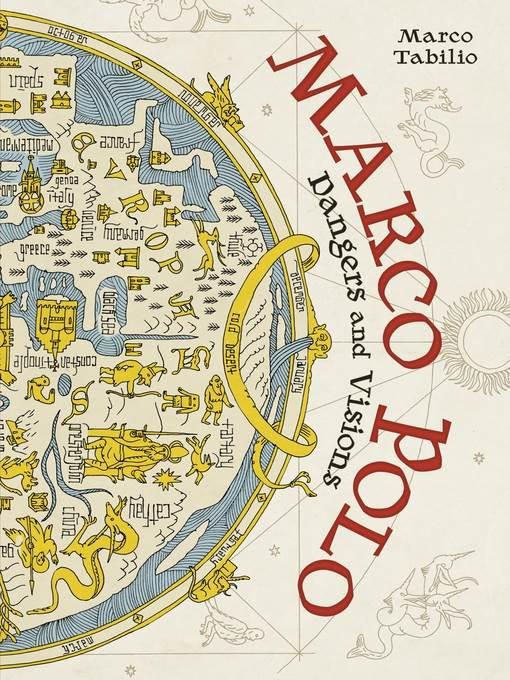
Marco Polo
Dangers and Visions
فرمت کتاب
ebook
تاریخ انتشار
2017
Lexile Score
490
Reading Level
1-2
نویسنده
Marco Tabilioشابک
9781512470833
کتاب های مرتبط
- اطلاعات
- نقد و بررسی
- دیدگاه کاربران
نقد و بررسی

July 24, 2017
At the beginning of the 14th century, the Venetian Marco Polo accompanied his father and uncle through Jerusalem, Baghdad, and Persia to the court of the Great Khan. They returned to Venice, then set out again for the Khan’s court, where Marco served for nearly 20 years. Based on the Travels of Marco Polo, Italian illustrator Tabilio’s acccount doubles back and forth in time through Marco’s life, peopling his graphic novel with thinly outlined, empty-eyed figures and writing in blunt prose (“Venice is a salty hole,” Marco tells a Mongol courtier). Panel sequences follow Marco on sea voyages and desert treks, through battles and privations (“When there is nothing to eat,” Marco says about the Mongols, “a warrior opens the vein of his horse and drinks the blood”). Renaissance-style maps accentuate the strangeness of unfamiliar lands with flat perspective. Followed in the book from boyhood to old age, Marco is tender, steely, ready for battle, and open to love. Though dense and sometimes hard to follow, the resulting epic casts a spell; readers won’t soon forget Marco’s kaleidoscopic journey—or the miracle that he survived to tell his story. Ages 14–up.

July 1, 2017
Gr 7 Up-Framed by the story of how Marco Polo and Rustichello da Pisa wrote the famed travelogue while they were imprisoned in Genoa, this title is the latest take on the oft-adapted Il Milione, or The Travels of Marco Polo. A teenage Marco joins his merchant father and uncle, Niccolo and Maffeo Polo, as they traverse the Silk Road on a three-year journey to Khanbaliq (known today as Beijing). Once there, Marco befriends Kublai Khan (grandson of Genghis Khan) and serves a variety of roles at the Great Khan's court for nearly 20 years before returning to a much-changed Europe. This book is a historical record, a coming-of-age tale, and a musing on storytelling and storytellers. Rustichello's writing process is an apt vehicle for that commentary; he considers Marco his protagonist and is shown adding a three-headed dragon to the narrative while Marco is feverish, as that is what the European audience would expect from a work about the Far East. Tabilio's dynamic illustrations have a distinctly medieval style and include the occasional grotesque image, e.g., skeletal monsters or a detailed map of the divisions of the Mongol empire in the shape of Genghis Khan's dismantled body. However, these painstakingly intricate visuals, though attractive, may be hard on the eye. Many readers will find it difficult to become immersed in this volume, but it's an effective introduction to the explorer, especially compared with more typical biographies. Back matter includes a straightforward account of Marco Polo's life and a glossary of terms. VERDICT Useful as a supplemental text in art, history, geography, or literature classrooms, and recommended as an additional purchase for large graphic novel collections.-Kacy Helwick, New Orleans Public Library
Copyright 2017 School Library Journal, LLC Used with permission.

June 1, 2017
Italian cartoonist Tabilio and translator Schwandt breathe some new life into Marco Polo and his travels in this debut graphic novel.Using Polo's Il Milione as a launching pad, this fictional biography explores the Venetian traveler as much as it does his travels. Captured and imprisoned by the Genoese after the Battle of Korcula, an injured Polo awaits the negotiation of his release and meets Pisan writer Rustichello. When Polo's fluency in the language of Cathay (a medieval name for China) sparks his curiosity, Rustichello convinces Polo to share the story that would eventually become Il Milione, with an added focus on Polo's coming-of-age. The chronicle of Polo's daunting travels and perilous adventures with his father and uncle takes on fantastic proportions as it intertwines with dreams, visions, and Tabilio's transporting illustrations that are as complex in content as they are simple in style. Although it seeks to humanize the nearly mythic figure of Marco Polo, the narrative does not offer a challenge to its source material's Western, Christian worldview, and the resulting perspective on Asia's myriad cultures and history is awash in colonial exoticism. However, small anachronisms and metafictive comments from Rustichello invoke the many centuries of debate around Marco Polo's travelogue, situating readers to question where his perspective might depart from truth. Complex even for history buffs, this one requires and merits a second read. (afterword, glossary) (Graphic historical fiction. 14-adult)
COPYRIGHT(2017) Kirkus Reviews, ALL RIGHTS RESERVED.

























دیدگاه کاربران